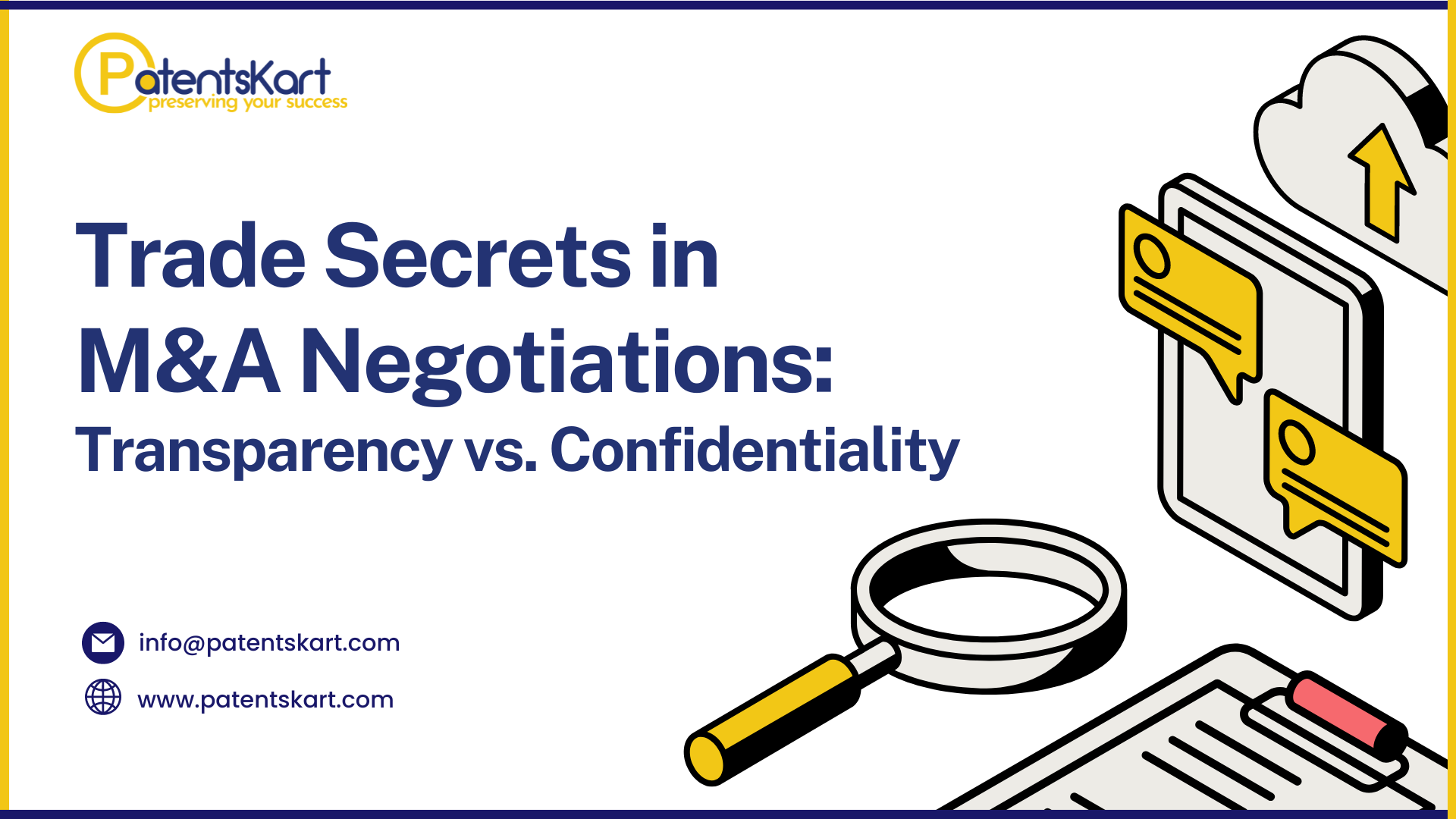Mergers and Acquisitions (M&A) can be thrilling opportunities for growth, but they also involve a delicate dance between transparency and confidentiality. This is especially true when trade secrets are involved. These valuable nuggets of confidential information can be the very foundation of a company’s competitive edge.
Understanding the Value of Trade Secrets in M&A Deals
Unique recipes, proprietary software, client lists, and inventive production processes are just a few examples of the many types of information that can be considered trade secrets. Their value in a merger or acquisition deal can be high and can affect the deal’s final price tag. To evaluate the real potential of the target company, the buyer must know these secrets.
The Catch-22: How to Keep Negotiations Honest While Still Protecting Confidentiality
The risks of disclosing trade secrets, however, are real. The data could cause serious financial damage if it were to fall into the hands of competitors. This puts the two sides of an M&A negotiation in a difficult position: the buyer wants accurate information to make a choice, and the seller wants to keep its most valuable assets safe.
Strategies for Safeguarding Trade Secrets During M&A Discussions
So, how can you navigate this tricky scenario? Here are some key strategies:
- Identify and Classify: Before entering negotiations, meticulously identify and classify all your trade secrets. This helps determine the level of protection needed for each piece of information.
- Non-Disclosure Agreements (NDAs): A strong NDA signed by all parties involved in the M&A discussions is essential. This agreement outlines the specific information deemed confidential and the legal repercussions of its unauthorized disclosure.
- Controlled Access: Limit access to trade secrets to only those on a need-to-know basis within the buyer’s team. Consider using secure virtual data rooms for the controlled sharing of sensitive documents.
Negotiation Tactics: Leveraging Trade Secrets Without Compromising Security
During negotiations, you can leverage your trade secrets to demonstrate your value proposition to the buyer. However, do so strategically:
- Redacted Information: Provide summaries or high-level overviews of your trade secrets, redacting the most sensitive details.
- Focus on Outcomes: Highlight the benefits and competitive advantages derived from your trade secrets, rather than revealing the exact methods themselves.
The Legal Landscape: Compliance and Enforcement of Trade Secrets Laws in M&A Transactions
Understanding the legal framework surrounding trade secrets is crucial. The Defend Trade Secrets Act (DTSA) offers a federal civil cause of action for the misappropriation of trade secrets. Familiarize yourself with relevant laws to ensure proper protection and enforceability.
Proceed with Caution – Navigating the Complex Terrain of Trade Secrets in M&A Negotiations
Trade secrets are a powerful asset in M&A negotiations, but they require careful handling. By implementing robust safeguards, employing strategic negotiation tactics, and staying informed about relevant laws, you can ensure a successful M&A transaction that protects your valuable intellectual property.
Also Read: Don’t Forget to Consider These Five Things Before Filing a Patent

